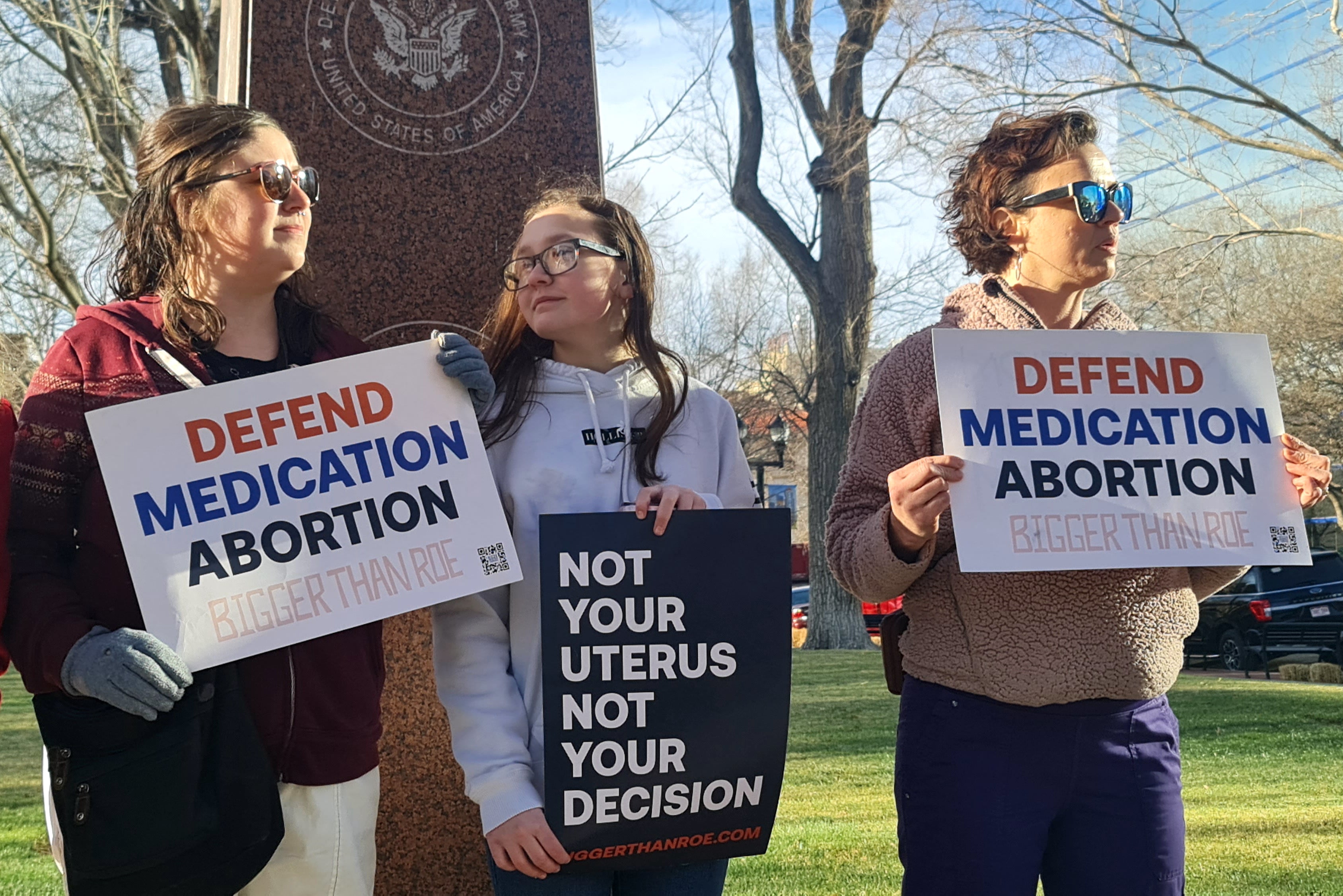
After several weeks of deliberation, U.S. District Court Judge Matthew Kacsmaryk handed down a decision that could alter the lives of the millions of Americans who can get pregnant. Kacsmaryk, an antiabortion jurist nominated by Donald Trump, issued a ruling staying the U.S. Food and Drug Administration’s (FDA) approval of mifepristone, the most effective medication for early abortion and miscarriage care, currently used in a majority of abortions in the United States.
The ruling may have no immediate impact in 17 states and the District of Columbia that are currently part of another lawsuit about mifepristone. It may, however, result in at least temporarily loss of access in other states. The federal Department of Justice has already begun the appeal process against Kacsmaryk’s decision, and a higher court could overturn his ruling, allowing mifepristone back onto the market nationally. But even if that happens, this safe medication will continue to be subject to onerous, medically unnecessary restrictions.
Kacsmaryk’s extraordinary ruling found in favor of the plaintiffs in the case Alliance for Hippocratic Medicine v. FDA. Lawyers for the Alliance, an antiabortion group founded for the purpose of bringing this lawsuit, argued that the way FDA initially approved the drug for sale in the U.S. in the year 2000 did not allow for enough research and testing. This is not true; approval took four years, and the drug was thoroughly tested in the U.S and in France, where it was originally developed.
Still, most observers are not surprised by Kacsmaryk’s decision. Despite the clear and rigorous evidence that abortion care, including medication and procedural abortions, is safe and that access to abortion is crucial to public health, antiabortion jurists frequently cede to arguments against its safety, which are grounded in ideology masquerading as science. In the case of mifepristone, the fact that the U.S. government has excessively regulated the drug and curtailed access to it for decades does not help to counter these false claims.
The truth is that mifepristone is safe, effective and suitable for widespread use without any special restrictions on distribution. It is far past time for the scientific community and the broader public to stand in unified opposition to how state and federal regulations continue to restrict abortion care—even in states where abortion currently remains legal. Abortion is health care, and the increasing levels of interference are creating unnecessarily dangerous health outcomes that we must work together to stop.
The unnecessary restrictions on mifepristone are an example of “abortion exceptionalism.” As a social scientist and a public health scholar, I see this exceptionalism as demonstrating abortion stigma at work. Stigma describes a social process through which a particular group or phenomenon is rejected and excluded. This exclusion can be physical, as when mainstream medicine stigmatizes abortion by forcing care out of multispecialty settings like hospitals into specialized clinics removed from the rest of health care. This exclusion can also be evident in the way we talk—or don’t talk—about a subject, as when shame propels people to hide their abortions from family, friends and healthcare providers. Stigma is also reinforced by onerous, medically unnecessary laws that treat abortion differently than other health care. During the Roe era, antiabortion activists used state laws such as waiting periods and parental consent requirements to reinforce the same false message: that abortion is not routine health care but rather something shameful and scary.
Even before Kacsmaryk’s decision, existing federal regulations on mifepristone also reinforced abortion stigma. The drug, which works by blocking a hormone needed to sustain pregnancy, held promise of improving access to abortion care when it was introduced over 20 years ago. Before mifepristone’s approval, most pregnancy terminations in the U.S. used vacuum aspiration, a brief and safe procedure with high patient satisfaction, but one that requires specific clinical training many clinicians do not have.
By contrast, medication abortion can be safely and effectively managed by any clinician who, once they’ve dated a pregnancy and ruled out very rare contraindications, can counsel patients on use of the medication. This, in theory, means more clinicians in more health care settings can provide abortion care.
In practice, many clinicians who want to offer mifepristone are unable to because of federal prescribing regulations that have existed in varying forms since mifepristone’s initial approval. Most notably, mifepristone is subject to the FDA’s Risk Evaluation and Mitigation Strategy (REMS), a highly restrictive set of regulations applied only to dozens of medications out of over 20,000 drugs currently approved for marketing in the United States. Other drugs needing REMS have side effects that can cause comas, or cause bones to break. People take mifepristone specifically to pass a pregnancy—a process that always involves cramping and bleeding. The drug also has a few side effects similar to those of thousands of drugs not subject to a REMS, such as nausea.
The FDA’s regulations are themselves both a product of and a means to perpetuate abortion stigma. The mifepristone REMS require that clinicians register with a drug distributor prior to prescribing the drug, that their patients sign a specific consent form mandated by FDA, and until recently, that mifepristone be dispensed directly by the care team in a health care setting. In January 2023, the FDA changed these regulations to permanently allow dispensing from certified pharmacies. But the pharmacy certification process itself is onerous, and the other requirements remain in place, making mifepristone difficult to access even before Kacsmaryk’s ruling.
The truth is that mifepristone should not only remain in use, but it should be easier to get—the FDA should remove the REMS completely. There is a strong consensus among scientific experts that mifepristone is safe, effective and superior to alternatives for both early abortion and early miscarriage care. In the 23 years since its initial approval in the United States, mifepristone has become more common worldwide. We now have research from tens of thousands of patients who received mifepristone in England and Canada showing it is extremely safe and highly effective without REMS-like restrictions.
As a consequence of Kacsmaryk’s ruling, mifepristone may soon become unavailable in large swaths of the U.S., preventing its use for miscarriage in areas where abortion is currently illegal, and for both miscarriage and abortion in areas where pregnancy termination remains available. In the coming months and years, litigation will likely bring this issue before the Supreme Court. Regardless of how the Court may rule, every American should see even a temporary removal of mifepristone from the market as a canary in a coal mine—chilling evidence that ideology trumps science for many American jurists. Gender-affirming care and contraception are likely next to the chopping block, but where this dangerous precedent will ultimately lead us is unknown.
This is an opinion and analysis article, and the views expressed by the author or authors are not necessarily those of Scientific American.


